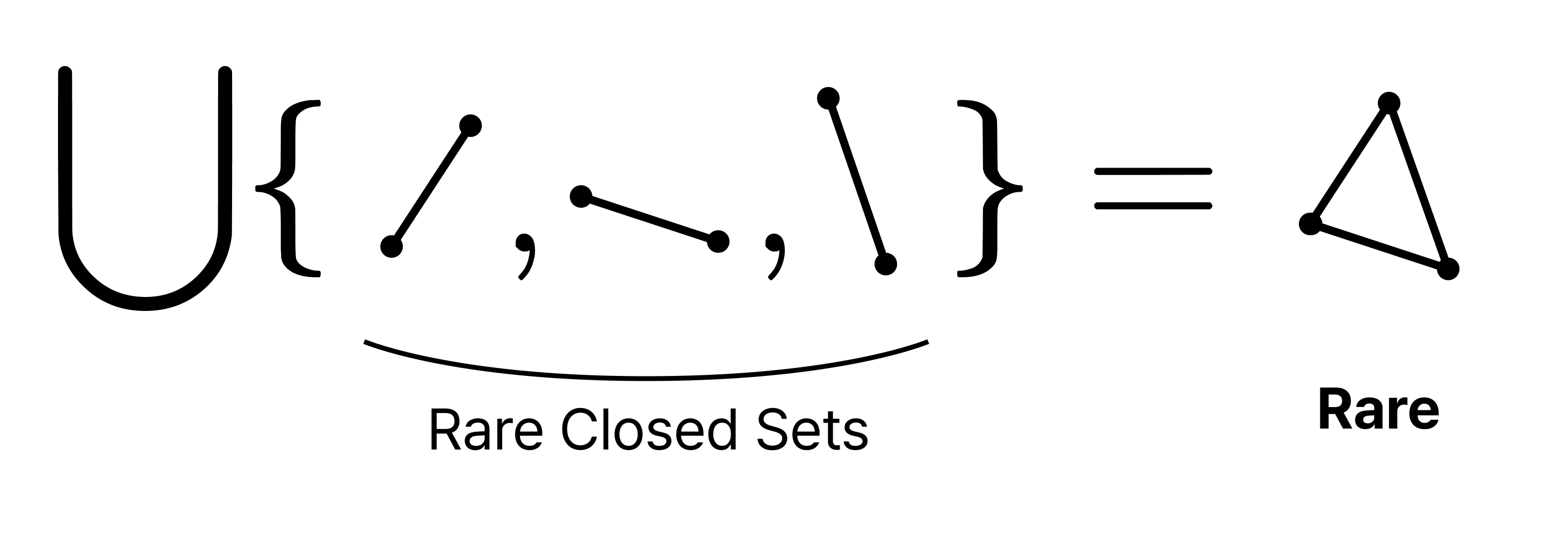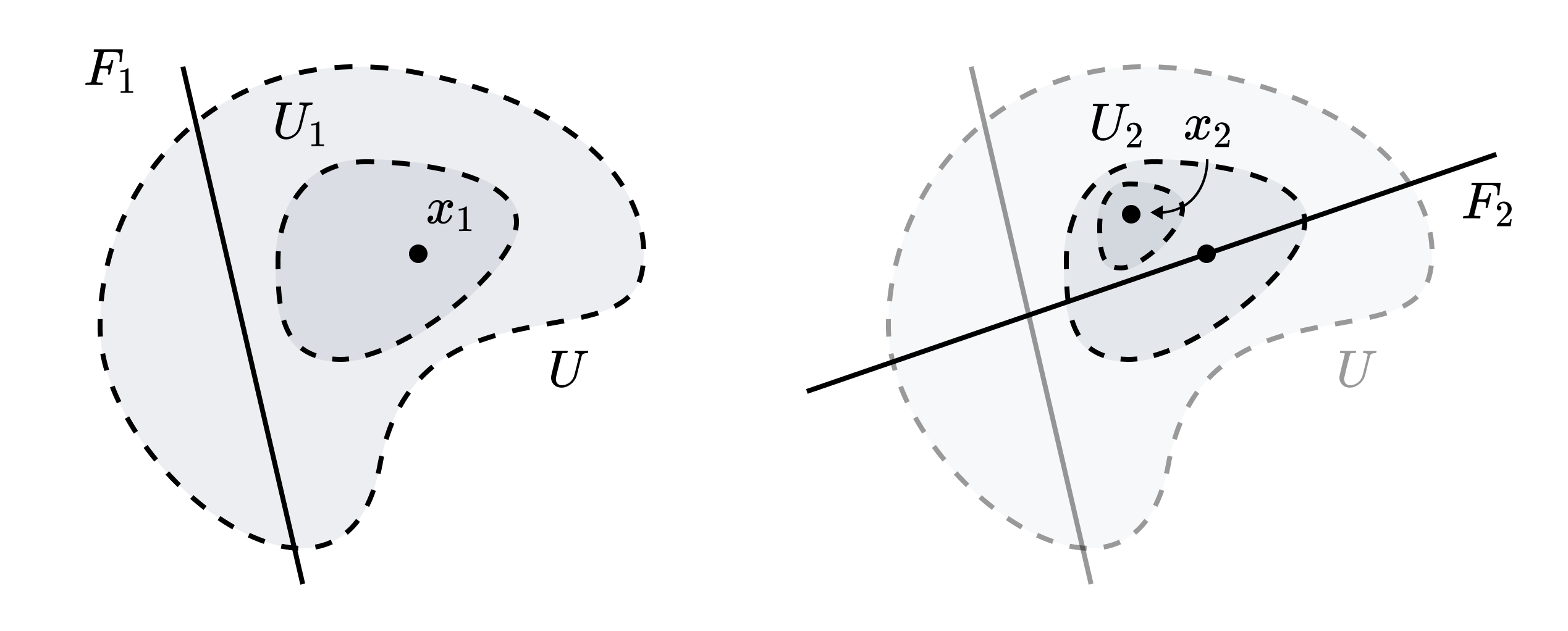The Baire Category Theorem
01 Dec 20241. Baire Spaces
Theorem. Let $S$ be a subset of a topological space $X$. The following are equivalent:
- $\left( \operatorname{cl}S \right)^\circ$ is empty.
- $(\operatorname{cl}S)^c$ is dense.
- $S$ is not dense in any open set of $X$.
Such a set $S$ is said to be rare (or nowhere dense).
Definition. A space $X$ is called a Baire space if every countable union $\bigcup F_n$ of rare closed sets is rare.

Remark. $X$ is a Baire space iff every countable intersection of open dense sets in $X$ is dense.
Example. $\mathbb{Q}$ is not a Baire space.
- $\lbrace q \rbrace$ is a rare closed set, but $\bigcup_{q \in \mathbb{Q}} \lbrace q\rbrace = \mathbb{Q}$ is not rare.
- $\mathbb{Q} \setminus \lbrace q \rbrace$ is a dense open set, but $\bigcap_{q \in \mathbb{Q}} \left( \mathbb{Q} \setminus \lbrace q \rbrace \right) = \varnothing$ is not dense.
2. The Baire Category Theorem
Cantor’s Theorem on Compact Spaces. The following are equivalent:
- $X$ is compact.
- For any collection $\mathcal{C}$ of closed sets with the finite intersection property, $\bigcap_{C \in \mathcal{C}} C \neq \varnothing$.
Cantor's Theorem on Complete Metric Spaces. The following are equivalent:
- $X$ is a complete metric space.
- For any nonempty sequence of closed sets $C_1 \supseteq C_2 \supseteq \cdots$, we have $\bigcap C_n \neq \varnothing$, and in particular, when $\operatorname{diam}C_n \to 0$, $\bigcap C_n$ is a singleton.
Remark. Statement 2 implies statement 4. From this, one can show that compact metric spaces are complete. The converse does not hold.
Theorem. Complete metric spaces and compact Hausdorff spaces are Baire spaces.
Proof.
Let $X$ be a complete metric space or a compact Hausdorff space. Given a countable collection $\lbrace F_n \rbrace$ of rare closed sets, we shall show that for any open set $U$, we have $U \not\subset \bigcup F_n$. To this end, we shall find $x \in U$ such that $\forall n : x \not\in F_n$.
Since $F_1$ is rare, there exists $x_1 \in U \setminus F_1$. As $X$ is a regular space, there exists an open set $U_1$ such that $x_1 \in U_1$ and $\overline{U_1} \cap F_1 = \varnothing$. Inductively, we define:
- $x_n \in U_n \setminus F_n$
- $U_n \subset U_{n - 1}$
- $\overline{U_n} \cap F_n = \varnothing$

By Cantor’s theorem, there exists $x \in \bigcap \overline{U_n}$.
3. Applications of the Baire Category Theorem
Convergence of continuous function sequences is almost continuous. Let $\lbrace f_n : X → (Y, d) \rbrace$ be a sequence of continuous functions converging to $f$. Then
\[S = \lbrace x \in X : f\text{ is continuous at } x \rbrace\]is dense in $X$.
KAIST POW2024-20. Let $f$ be a continuous function such that
\[\forall x \geq 0 : \lim_{n \to \infty} f(nx) = 0\]Then $\lim_{x \to \infty} f(x) = 0$.
Existence of pathological functions. Let $h : [0, 1] → \mathbb{R}$ be a continuous function. For any $ε > 0$, there exists a function $g : [0,1] → \mathbb{R}$ satisfying:
- $\lVert h − g\rVert < ε$.
- $g$ is continuous on the entire interval.
- $g$ is differentiable nowhere.